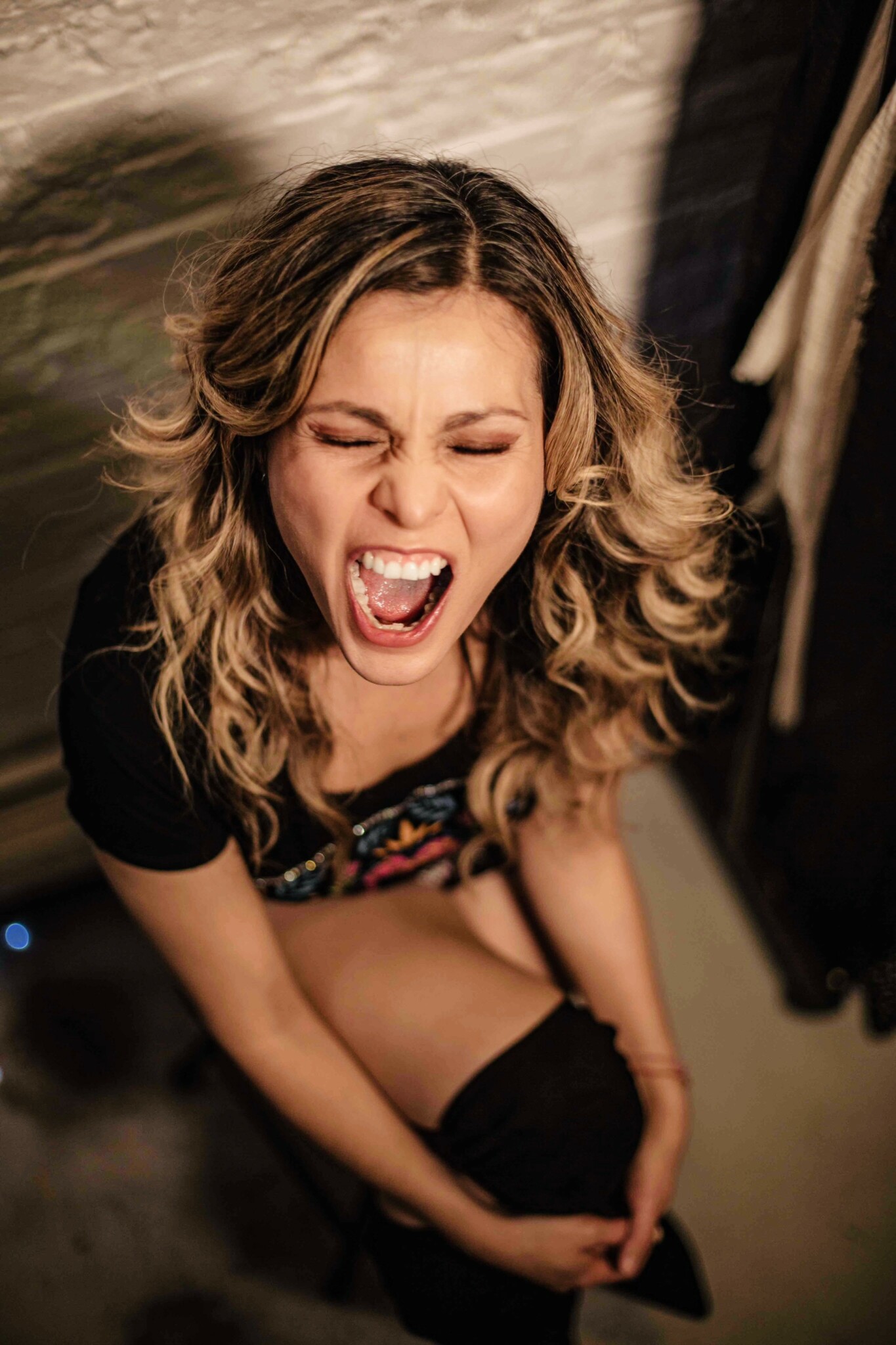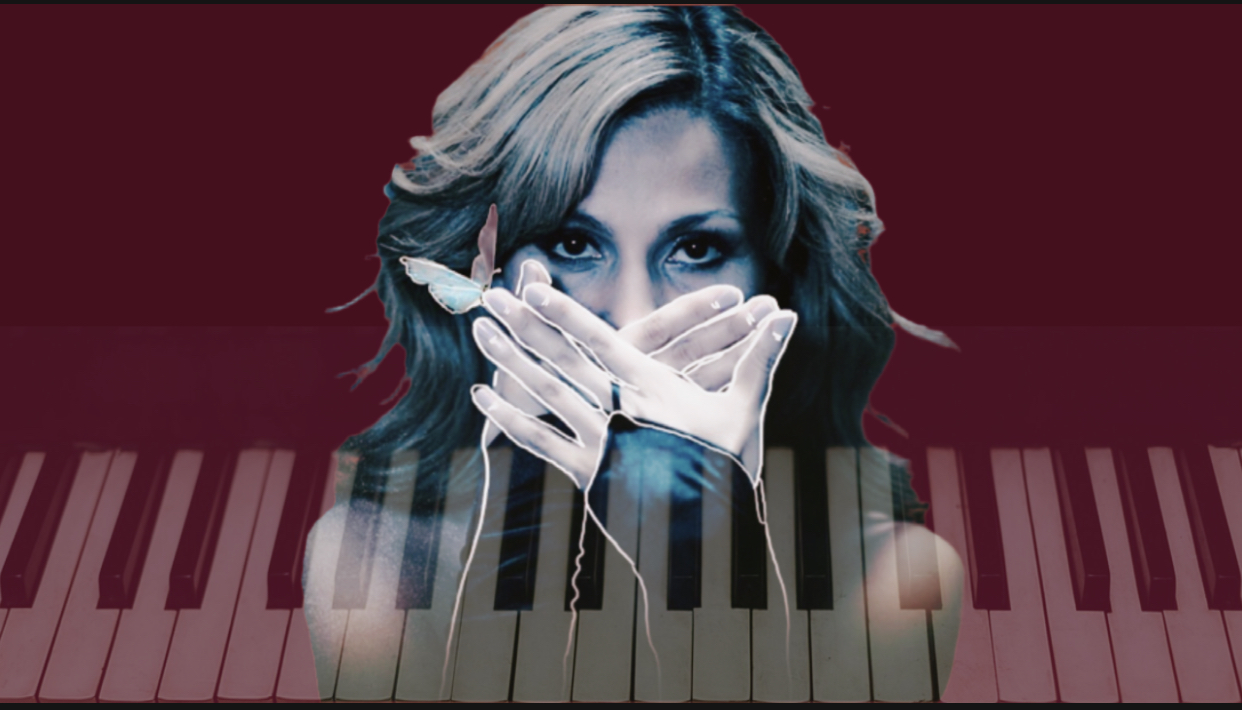We were lucky to catch up with Diana Sophia recently and have shared our conversation below.
Diana , thanks for joining us, excited to have you contributing your stories and insights. We’d love to hear about when you first realized that you wanted to pursue a creative path professionally.
I believe my creative journey began “by accident” when I was 11 years old. One evening, I was watching a Mexican soap opera, “Telenovela”, featuring a female writer. I was so inspired by that character that I thought to myself, “I want to be like her.” That very night, I started writing unaware that this simple action would one day lead me to become a singer and songwriter. Writing gave me a powerful outlet to express my thoughts, feelings, and dreams.
However, it wasn’t enough. There was one emotion I didn’t know how to handle: anger. Growing up in a very dysfunctional family, I struggled with the anger I felt toward my parents and couldn’t find a way to process or write about it. Then, one day, I saw the drummer of the Mexican band “Maná” perform, and I thought, “I want to be like him.” I believed playing the drums could help me channel my anger, so I got a drum set and started playing. Before long, I was invited to join a garage band. Although the band members liked my playing, I never felt very good at it.
One day during rehearsal, we were practicing the song “Zombie” by ‘The Cranberries’. The band leader asked me to try singing while playing the drums. It was challenging, but I managed to do it, and I loved it. Singing that song awakened something in me, and soon after, I felt an urge to create my own songs using my writings. Since I only played drums, I turned to my best friend, who played guitar, for help. He encouraged me to create a melody for my lyrics, and voilà, he found the chords, and my first song was born. I even recorded it on a cassette tape. You can probably guess how old I am from that!
From that moment on, I no longer wanted to be like anyone else. I wanted to create my own songs and continue writing. My grandfather gifted me money to buy my first guitar, and I taught myself to play by ear while writing songs along the way. I dreamed of becoming a Mexican singer-songwriter. Unfortunately, my family didn’t support me. Their discouraging comments and lack of encouragement made it difficult to pursue my dream.
Eventually, I left my parents’ home, believing freedom would allow me to follow my artistic passion, and it did. However, it took years and countless challenges to truly understand what freedom meant. I worked at the Mexican Opera House, “Palacio de Bellas Artes” to support myself financially. While my musical path became uncertain as I focused on singing opera, this job became pivotal. It ultimately gave me the courage to move to another country, which became the turning point in my life.
After overcoming many obstacles and moving to New York, I finally returned to who I have always been: a singer and songwriter.


Diana , before we move on to more of these sorts of questions, can you take some time to bring our readers up to speed on you and what you do?
As a professional singer, songwriter, and multidisciplinary artist originally from Mexico and now based in Brooklyn, NY, music has always been my dream and passion. At a young age, I left my parents’ home to pursue a career in music. When I told them about my decision, they offered me little support and gave me an ultimatum: I had two years to succeed in the music industry. If I didn’t, they expected me to abandon my dream and follow the path they had chosen for me. With that pressure in mind, after two years of studying at a conservatory, I auditioned for the Mexican Opera House Choir as a first soprano, secured a spot, and began my career in classical music. While this was a proud achievement, it wasn’t the path I had envisioned for myself. My journey to reconnect with my true identity as a singer and songwriter was far from straightforward.
Over the years, I navigated many challenges, including working in Mexico’s classical music world without truly enjoying it, getting lost in others’ expectations of me, moving to New York City in search of change, taking jobs unrelated to music, and struggling to find my place in life.
Despite the challenges I faced in New York, I reclaimed my voice as a singer-songwriter and began creating art that authentically reflects who I am. From NYC, I’ve released my EP “Shine”, recorded multiple singles, produced music videos, and created my own rock opera, “A Mexican Free Holy!” My music is deeply personal yet universal, exploring themes of resilience, trauma recovery, and healing. Through storytelling infused with rock, pop, opera, and modal music, I create performances that are both intimate and transformative.
What sets me apart is my commitment to using music and art as powerful tools for healing. I am at the beginning stages of creating safe spaces where audiences can explore their emotions, feel seen, and find hope. In addition to my performances, I offer voice and songwriting classes that empower individuals to harness music for self-expression, healing, and personal growth.
Today, I make a living as a musician, working as an organist and singer for religious services while actively taking steps to expand my work as a singer-songwriter into collaborations with mental health organizations, nonprofits, and therapy centers. I’ve begun sharing how music has supported my healing journey by writing an article for the nonprofit “Healing and CPTSD” magazine, “The Chronicles”. This summer, I will begin a training program with an organization focused on addressing childhood sexual abuse. My vision is to share how music has helped me recover from trauma by delivering intimate performances of my original music.
For me, music is more than entertainment, it’s a way to process, heal, and bring people together. Whether through performances, classes, or community collaborations, my mission is to inspire hope and help others feel less alone in their journeys.


In your view, what can society to do to best support artists, creatives and a thriving creative ecosystem?
We, independent artists and creatives, truly need the support and engagement of people who connect with what we do. While social media gives everyone the opportunity to share their work instantly, it also presents significant challenges for artists. Depending on each artist’s journey, social media can be either a blessing or a curse.
Many experienced creatives and artists with strong backgrounds struggle to gain visibility due to algorithms that don’t favor them. This frustration and distraction can take a toll on the creative work. For many of us, the time, resources, or energy required to create consistent social media content simply isn’t feasible. Being an artist demands discipline and a deep investment in our craft and projects, and the pressure to maintain an online presence often conflicts with the focus required for artistic growth.
I know artists and musicians who have successfully built their careers outside of social media, while others hire professionals to manage their content. However, when money is tight, hiring help isn’t always an option.
The best way society can support us is by engaging with our work in meaningful ways: attending performances, exhibitions, and shows; following us on social media; tagging us; and recommending our artistic creations to others. This kind of support and appreciation means the world to us, it inspires us to keep going and find new ways to share our art.


Is there mission driving your creative journey?
Yes, there is. In 2019, after discovering that I was a complex trauma survivor struggling with severe PTSD symptoms, I began to understand why so many unfortunate events in my life had unfolded the way they did. This realization was paradoxical, it revealed the depths of despair, yet it also showed me that there was nothing wrong with me, but rather with what had happened to me. The challenge became figuring out what to do with its remnants. This dim light of understanding became the hope that reminded me I could choose healing and recovery. Since then, writing and music, which have always accompanied me, became even more integral to my life. From 2021 to the present, I’ve felt a strong calling to reflect the transformative power of music in my creative work, using it to inspire hope, foster connection, and support social restoration.
Over the past few years, I’ve been composing pieces that explore the complexities of healing trauma. My goal is to create an emotive sound that captures the vulnerability of our humanity, while also mitigating harm and promoting resilience and growth.
As both a music artist and a complex trauma survivor, my journey has been anything but easy. Trauma remains a taboo subject, many avoid discussing it or even admitting they’ve experienced it, while others see survivors as vulnerable targets. The music industry, despite being a space for artistic expression, has also been a source of deep trauma for artists who have endured exploitation, mistreatment, and toxic environments. I have faced stigma and misunderstanding surrounding my work, yet I remain committed to sharing the transformative power of music.
In a world that often disregards cases of violence, especially those involving family and friends, trauma survivors are often left invisible, isolated, and stigmatized. My experience as a Mexican female immigrant in New York has further broadened my perspective on life and enriched my artistry. I see myself as one seed, amplifying the voices of underserved communities silenced by trauma.
Contact Info:
- Website: https://www.dianasophia.com
- Instagram: https://www.instagram.com/dianasophiamusic/
- Facebook: https://www.facebook.com/Dianasophiamusic/
- Youtube: https://www.youtube.com/@dianasophiamusic
- Soundcloud: https://soundcloud.com/dianasophiamusic





Image Credits
William Murray
Gustavo Rodriguez
Omar Garcia


